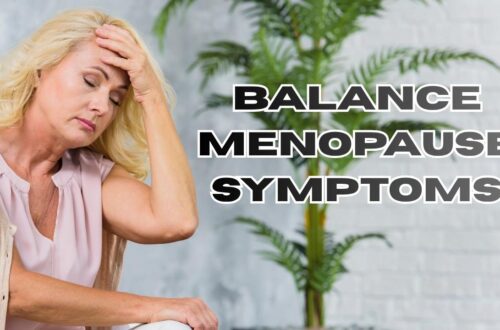Amenorrhea and hair loss often occur together, signaling underlying imbalances that affect multiple body systems simultaneously. When your menstrual cycle suddenly stops and you notice your hair thinning at the same time, your body may be sending an urgent message about your hormonal health. These seemingly unrelated symptoms share a common thread: disrupted hormone production that impacts both reproductive function and hair follicle health. Whether triggered by extreme weight loss, excessive exercise, chronic stress, or conditions like polycystic ovary syndrome (PCOS), the connection between missing periods and hair changes reveals how intricately our endocrine system operates.
This article explores the hormonal mechanisms linking these two concerns, identifies common causes ranging from thyroid disorders to nutritional deficiencies, and provides evidence-based solutions to restore both menstrual regularity and hair vitality. Understanding this relationship is the first step toward reclaiming your overall well-being.
What Is the Connection Between Hormonal Imbalances and Physical Symptoms?
The relationship between amenorrhea and hair loss runs deeper than surface-level symptoms. Both conditions stem from disruptions in your body’s delicate hormonal ecosystem, particularly involving estrogen, progesterone, thyroid hormones, and androgens. When hormones fall out of balance, they trigger a cascade of effects throughout your body.
Missing periods, medically termed amenorrhea, occur when menstruation stops for three or more consecutive cycles. Simultaneously, hair loss or thinning happens when hair follicles don’t receive adequate hormonal support for their growth cycle. The same hormonal disruptions causing your periods to cease can starve hair follicles of the nutrients and signals they need to thrive.
How Hormones Control Your Menstrual Cycle and Hair Growth
Your menstrual cycle depends on a coordinated dance between the hypothalamus, pituitary gland, and ovaries. When this communication breaks down due to stress, nutritional deficiency, or underlying medical conditions, periods can stop entirely.
Hair growth follows a similar hormonal pattern. Estrogen promotes the anagen phase, keeping hair in an active growth state longer. When estrogen levels drop, hair prematurely enters the telogen phase, leading to increased shedding and noticeable thinning.
Common Causes Linking Missing Periods and Thinning Hair
Understanding what triggers both amenorrhea and hair loss helps identify the right treatment approach. Several conditions create the perfect storm for these dual symptoms.
Polycystic Ovary Syndrome (PCOS)
PCOS affects up to 10% of women of reproductive age and represents one of the most common causes of hormonal imbalance. This condition elevates androgen levels, leading to:
- Irregular or absent menstrual periods
- Male-pattern hair loss on the scalp
- Excess facial and body hair growth
- Insulin resistance and weight gain
- Acne and skin changes
Thyroid Disorders
Both hyperthyroidism and hypothyroidism disrupt normal menstrual function and hair growth cycles. Your thyroid gland produces hormones that regulate metabolism, and when these levels become imbalanced, you may experience:
- Menstrual irregularities or complete cessation
- Diffuse hair thinning across the entire scalp
- Fatigue and unexplained weight changes
- Temperature sensitivity
- Mood disturbances
Functional Hypothalamic Amenorrhea (FHA)
This condition occurs when your hypothalamus stops releasing gonadotropin-releasing hormone (GnRH), which triggers the menstrual cycle. FHA commonly affects athletes, individuals with eating disorders, or those under chronic stress. The same stress response that shuts down reproduction also affects hair follicles, causing increased shedding.
Nutritional Deficiencies
Severe calorie restriction or deficiencies in specific nutrients create the conditions for amenorrhea and hair loss to develop together.
Key deficiencies include:
- Iron: Essential for oxygen transport to hair follicles and reproductive organs
- Zinc: Supports hormone production and hair protein synthesis
- Vitamin D: Regulates menstrual cycles and stimulates hair follicle growth
- Protein: Necessary for building hair structure and maintaining hormonal balance
- B vitamins: Critical for red blood cell formation and cellular energy production

Why Addressing Both Symptoms Matters for Your Health
Experiencing amenorrhea and hair loss simultaneously isn’t just about appearance or convenience. These symptoms signal that your body lacks the resources or hormonal environment to support normal functions.
Prolonged amenorrhea increases your risk of:
- Bone density loss and osteoporosis
- Cardiovascular health issues
- Infertility challenges
- Psychological stress and anxiety
Meanwhile, ongoing hair loss often indicates chronic nutrient depletion or hormonal imbalance that affects your overall vitality and confidence.
Treatment Approaches for Hormonal Restoration
Addressing amenorrhea and hair loss requires identifying and treating the underlying cause rather than just managing symptoms.
Medical Interventions
Your healthcare provider may recommend:
- Hormone replacement therapy to restore estrogen and progesterone levels
- Thyroid medication for diagnosed thyroid disorders
- Anti-androgen medications for PCOS-related hair loss
- Nutritional supplementation for identified deficiencies
Lifestyle Modifications
Many cases of amenorrhea and hair loss improve with lifestyle changes:
- Increasing calorie intake to support metabolic function
- Reducing excessive exercise intensity or duration
- Implementing stress management techniques like meditation or yoga
- Ensuring adequate sleep for hormonal regulation
- Maintaining a balanced diet rich in whole foods, healthy fats, and lean proteins
Recovery from both conditions takes time, typically requiring several months of consistent intervention before seeing improvement in menstrual regularity and hair regrowth.
Conclusion
The connection between amenorrhea and hair loss reveals how profoundly hormonal imbalances affect your body’s multiple systems. Whether caused by PCOS, thyroid disorders, nutritional deficiencies, or excessive stress, these dual symptoms demand attention and proper medical evaluation. Ignoring missing periods and thinning hair can lead to long-term health consequences, including bone loss and fertility challenges. By identifying the root cause and implementing targeted treatments, you can restore hormonal balance and reclaim both your menstrual health and hair vitality. If you’re experiencing amenorrhea and hair loss together, consult a healthcare provider to develop a personalized treatment plan that addresses your specific needs and supports your overall well-being.





